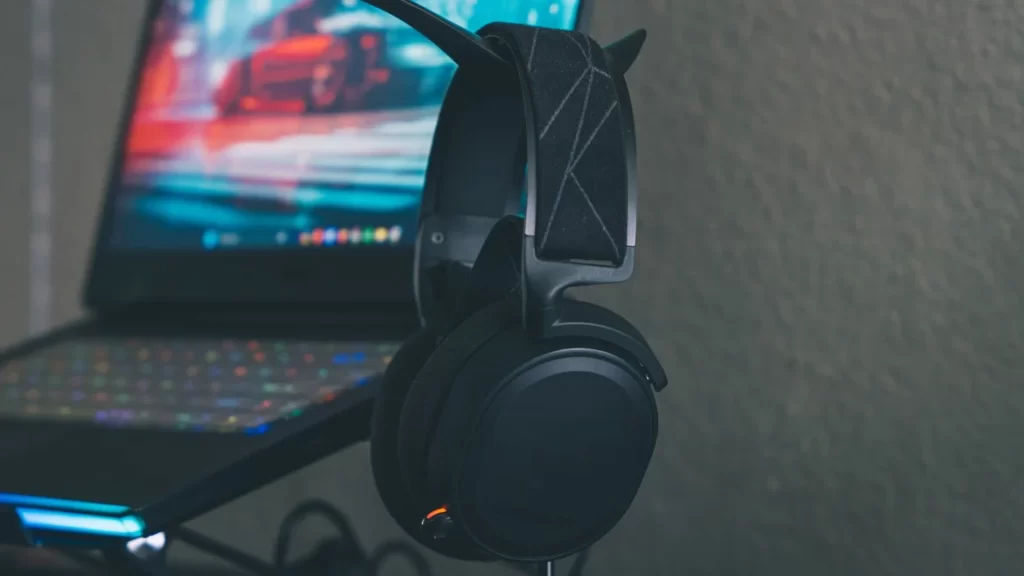SteelSeries Arctis Nova Pro Wireless Review: Great but Imperfect Gaming Headset

A successor to SteelSeries’ beloved flagship Arctis Pro gaming headset line, which turned four this year, the new SteelSeries Arctis Nova Pro keeps some of the best aspects of its predecessor and other Arctis kin, like the hot-swappable battery, dual 2.4GHz and Bluetooth wireless connectivity, speaker drivers designed for high-res audio and signature Arctis design and comfort. For the Nova Pros, SteelSeries upgraded aspects of the design and mic, increased battery life, switched connection types to match modern ports and consoles, swapped its spatial audio to a proprietary system, upgraded the GameDAC 2 (still only for the wired model) and more. The result is a fresh flagship headset that’s lost none of its gaming cred, but still feels a bit pricey.
There are five models in the Nova Pro line: $250 for the wired Nova Pro and its Xbox-specific sibling and $350 for the wireless models for PC, Xbox and PlayStation. There isn’t a ton of variation among them. The Xbox models swap a USB connection and the second USB-C port on the base station for the necessary Xbox-compatible USB connector but are otherwise identical to their respective linemates. All the headsets are PS5-compatible: The PS5 model simply has different packaging for sale at retail. I tested the Nova Pro Wireless, which means I didn’t get to evaluate the new GameDAC.
In addition to connecting to a PC or Mac via USB, you can output to the headset from a PS5 or Android phone equipped with a USB-C port via the base station (which is essentially the dongle), a Nintendo Switch (in TV mode) or anything that has a 3.5mm analog jack. The base station accepts an analog input as well, for mixing a stream on your PC. Among other things, SteelSeries removed the optical connections, which means if you’ve got an older console this isn’t a great choice.
Sounds great
SteelSeries updated the acoustic pipeline (all the hardware between the incoming audio and your ear) and it sounds excellent, with clear lows, midrange and highs. My admittedly sub-audiophile ears couldn’t make out any unintended distortion with Doom Eternal’s heavy metal pounding as loud as my ears could stand. The earcups deliver solid noise isolation, and a transparency toggle decreases isolation so you can sort of hear outside noises like the air conditioner and someone talking too loudly on a conference call.
The base station is capable of high-res audio up to 48kHz/24-bit and the serious parametric equalizer in SteelSeries’ new Sonar software (which lives within the company’s GG utility software) is excellent. (Compared with a graphic equalizer, which adjusts based on groups of frequencies, a parametric equalizer takes into account continuous transitions between the key frequencies. Besides, like magnets, Beziers make everything better.)
So, for instance, you can narrow the frequency of the output of a specific voice, footstep, vehicle and so on in a game to make it easier to hear and track them based on your own hearing characteristics. It comes with presets for a handful of popular multiplayer games as well as a generic “FPS Footsteps,” but you can tweak and save custom presets to your ears’ desire.
You can use the individual 10-step graphic equalizers for chat and the mic, so you can optimize one for clarity and the other for your best broadcast voice. The updated ClearCast 2 mic definitely hits SteelSeries’ goal for optimum clarity, though for plain old voice it lacks some of the warmth that some other mics provide.
Sonar also provides ClearCast AI noise cancellation, which seems to work really well without making your voice sound tinny or overprocessed. It lets you separately adjust the amount of NR for background noise (low, continuous sounds like fans) and impact noise, like keyboard pounding. It does a really good job on the latter, significantly muffling the sound of my seriously loud mechanical keyboard (tactile clicky FTW!).
SteelSeries switches from standard DTS surround sound to its own Sonar Spatial Audio, which translates position data within games into its own directional system. It works pretty well, but that’s partly because of how effective its tuning is. It has two sliders, a scale of performance to immersion and distance. Performance narrows the directionality of the sound, so you can better isolate (for example) footsteps, while immersion expands it for a more continuous 360-degree sound, like the voices in Senua’s head in Hellblade: Senua’s Sacrifice that seem to come from everywhere.
It doesn’t let you adjust individual speaker locations, like Razer’s THX does, but I don’t miss that here: The left and right rear channels, which I frequently hear too close to left and right, were correctly positioned.
Using spatial also seems the best way to listen to music. Without it, music sounds kind of flat, even with equalizer tweaks. The headset seems to consider movies an afterthought and music an after-afterthought, with only a couple of movie presets and no music presets.
There are also separate configuration settings as part of the main GG Engine, which can get confusing where they overlap; for instance, there’s also a graphic equalizer in settings, which is disabled if you have the Sonar equalizer active. It does have a toggle between optimizing the wireless signal for performance (lowest latency) or range. That didn’t seem to make much of a difference to me, though — at about 30 feet (through a couple of walls) it started to get a bit wonky. It’s pretty typical, though.
Battery life seems middle of the road. For instance, extrapolating from my current experience it should hit about 18 hours or so just from listening to music with no mic use. There are a lot of variables to consider here, though, such as the number of devices connected. SteelSeries mitigates it a bit with the battery swappability. In theory, you could buy more batteries and keep going forever.
New design
The Nova Pro headset and the wireless base station have gotten a makeover from the Arctis Pro, and the headset looks a lot cleaner, with smaller outer earcups, a mic that retracts completely into the earcup and redesigned buttons. It comes only in black, at least at launch.
The headset has the same proven earcup swivel mechanism as most of SteelSeries’ other Arctis models, but the company has changed how you adjust the elastic that controls where it sits on the top of your head. Under the previous design, you could lengthen or tighten it quickly and continuously, and sometimes while it was on your head, via Velcro.
Now it has three nubs on either side that you connect the band to on the inside. That limits the adjustability a bit, and you have to take it off your head to set it. I suspect by eliminating about half the heavy elastic required by the old design SteelSeries was able to shave a nontrivial amount of weight off it, though.
Some aspects of the design I’m not crazy about. True, there are a lot of aspects that need to be balanced and trade-offs are inevitable: Making the headset tight enough to stay on your head but loose enough that it doesn’t squeeze your head, the cushions sufficiently big and firm with the right amount of isolation but squishy enough for comfort and so on. At least on my head, these are a little too snug to work well with glasses. They’re not bad when you’re wearing them, but it’s hard to put them back on if you take them off. Not a huge issue if you don’t do it a lot, but if you do it constantly it takes a little work to squeeze them in behind your ears.
One of my pet peeves is overuse of the power button to control other functions via double, or worse, triple, clicks and/or holding it down for different lengths of time. It’s a recipe for annoyance at best and disaster at worst.
On the Nova Pro Wireless, you hit the power button to toggle active noise cancelling on and off and press it twice to toggle transparency mode. The Bluetooth button turns that connection on, but you also press it once to pick up a call and play or pause music, press it twice to skip to the next track and press it three times to go back a track. I somehow managed to automatically connect to my iPad Pro and start the last track I’d been playing without realizing it until I switched inputs and heard it.
All these controls are just too much to burden those two poor buttons with. While you can change settings via the base station, it’s always more natural to try to do it on the headset.
The USB connector on the earcup (for charging only — you can’t used it wired over USB) sits under a magnetic cover. Anything removed for more than 5 minutes runs the risk of disappearing like a sock in a dryer, at least for me. I like magnetic covers, but these magnets could stand to be a little stronger. You have to place them pretty precisely or they don’t stick, which is annoying and can slow down battery swaps.
The Arctis Pro had breathable fabric earcups, but SteelSeries switched to leatherette for the Nova. It’s a soft, comfy leatherette, but like most similar materials can get pretty warm.
There are also some capabilities I would like to see, especially given the price. I miss voice prompts that tell you battery level when you turn a headset on as well as when you change modes, rather than a series of beeps you have to remember.
I like dual wireless inputs, but it would be nice to have separate on-headset volume dials for each; for instance, I need an appropriate balance for notifications coming from my phone and the music streaming on my system as I write. Yes, you can set them on the individual devices, but that’s annoying when you’re doing it on the fly.
It would also be great if it supported power delivery to small devices, like a phone, at least when the base station is connected to a PC that it could draw the power from.
Ultimately, these feel like nitpicks, though, and definitely worth the trade-offs for the rest of the package.







